26 Abr Altea naranja: La revolución digital del mundo del arte a debate
El mundo del arte y de la cultura, consciente del impacto de tecnologías como las redes blockchain, los Nfts en la creación y la comunicación, organiza encuentros de debate de manera frecuente para educar sobre las posibilidades que dichas innovaciones permiten a los agentes culturales. En esta línea Altea Naranja organiza el evento “El mundo del arte digital y NFTs¨ en la segunda edición de Crea y Emprende en naranja. NFTManía participa en las jornadas y además comisaría una expo de arte digital llamada Recreating Maca.
El mundo del arte digital y NFTs
Tabla de contenidos
Acercar la revolución digital del mundo del arte, promover el talento y potenciar la cultura emprendedora del entorno de Altea. Con este objetivo, y debido al éxito de la anterior convocatoria, el Parque Científico de la Universidad Miguel Hernández (PCUMH) de Elche y el Ayuntamiento de Altea han organizado la segunda edición de Crea y Emprende en Naranja. En esta ocasión, el evento reunirá a artistas apasionados por el diseño, el mundo digital y los NFTs, y aglutinará conferencias; visionado de vídeoarte, vídeo animación y vídeo performance; art market; exposiciones de arte y máquinas de arcade.
En esta edición se impartirán conferencias y mesas redondas sobre temáticas de rabiosa actualidad relacionadas con el arte digital. El encuentro reunirá a artistas, ilustradores y expertos en criptoarte que abordarán la experiencia de emprender en el sector del arte digital, resolverán las dudas más frecuentes sobre el criptoarte y los NFTs, y darán a conocer en qué estado se encuentra ahora mismo la industria.
Por su parte, el evento también contará con diversas exposiciones de arte en las que se emitirán NFTs, se exhibirán esculturas y se podrá jugar de forma gratuita en la exposición de máquinas de arcade. Asimismo, se expondrán y estarán a la venta los libros Conversario Pintojo y las litografías de estudiantes de la Facultad de Bellas Artes de la UMH.
Asimismo, en el marco de esta jornada también se presentará la quinta edición de los Premios Altea Emprende. Este programa, promovido por el Ayuntamiento de Altea y el Parque Científico de la UMH, está dirigido a apoyar a emprendedores y start-ups de reciente creación. La iniciativa, que en estos momentos tiene las inscripciones abiertas, combina mentoring, eventos, networking, talleres de modelo de negocio y premios económicos para las mejores propuestas
Dónde y cuándo
El encuentro se llevará a cabo el próximo 5 de mayo, desde las 9.30 horas, en el Palau Altea Centre d’Arts. La asistencia al evento es gratuita previa inscripción.
Inscripción gratuita
Exposición Recreating Maca
Con motivo de las jornadas culturales, NFTManía ha seleccionado a 3 grandes artistas digitales, Mina Power, Raquel Casilda y Virginia Grau, para que reinterpreten obras que están en la colección del Museo de Arte Contemporáneo de Alicante, el MACA. Las obras se publicarán en la plataforma Nifty Gateway y además se expondrán en pantallas del Palacio de Altea. Como adelanto, entrevistamos a las artistas y mostramos las obras en las que se han inspirado para la muestra.
Mina Power
P. ¿Quién eres?
Soy Mina Power (aunque en realidad me llamo Ana) y soy artista digital con un grado en Diseño Gráfico.
Empecé a estudiar diseño en la Escuela de Arte y Superior de Diseño de Alicante con 33 años y un hijo de tres. No fue fácil, hasta me cambió el ciclo del sueño, pero terminé entre las dos mejores notas de mi año.
Desde entonces he trabajado en infinidad de proyectos que han acabado por influenciar mi trabajo artístico.
Como artista no me gusta encasillarme en ningún tipo de expresión artística, aunque lo cierto es que me inclino por la ilustración. Tanto en 2D como en 3D, aunque en el 3D aún me considero principiante.Mi obra tiene un aire naif con un estilo de ilustración vibrante y alegre. Me encanta jugar con las texturas, los patrones y esconder cosas en mis obras. Para mi es vital emocionarme y divertirme con cada pieza que hago.
Desde siempre me he sentido atraída por la ciencia ficción, la fantasía épica y el anime. Me fascinan aquellos artistas que son capaces de crear dimensiones o mundos nuevos. Por eso en mi trabajo es habitual encontrar criaturas, bestias o personajes desproporcionados con objetos en apariencia incomprensibles.
¿Cómo empieza tu relación con el criptoarte?
En diciembre de 2021 vi un reportaje por TV de Javier Arrés y me fascinó lo que contó de la web 3. Además, la idea de tener libertad creativa fue tan tentadora que no tuve más remedio que tirarme de cabeza!Así que busqué información, hasta hice un curso que no recomendaría a nadie y acabé llegando a Twitter. Teniendo en cuenta que nunca había compartido nada en redes sociales el cambio fue enorme. De verdad pensaba que a nadie le importaba lo que yo tenía que decir. Pero conocí a personas maravillosas que me ayudaron y hoy solo puedo decir que estoy feliz y orgullosa de haber tomado esta decisión.
La cantidad de talento y generosidad que hay en este ecosistema es incalculable. Tengo grandes amigos aquí. De esos que te apoyan y no tienen miedo a decirte “eh! ¡La estás cagando!” o “Tú vales mucho, sigue adelante!”. Evidentemente hay una parte mala. Claro. La lucha constante conmigo misma, buscar mi propia voz, publicar y vender mi obra, qué precio le pongo o en qué market minteo, son algunos de los escollos con los que lidio a diario. Como casi todos aquí. Pero trato de motivarme, buscar apoyo en mi gente y seguir confiando en que mi esfuerzo dará sus frutos.
P. ¿Cómo trabajas?
Depende de la obra en sí, pero normalmente trabajo sobre una idea en la que me paso varios días investigando el tema en cuestión.
Después, varios bocetos a lápiz para escoger la mejor composición, hago una foto del boceto que más me gusta y lo paso al iPad o al ordenador. Suelo trabajar con Affinity Designer o con Procreate. Pero también me encanta dibujar en vivo. Comienzo con una idea básica y la voy desarrollando mientras dibujo. Muchas de estas piezas no ven la luz, o luego acaban en animaciones, o las integro en otra obra más grande. Nunca sé dónde pueden acabar.P. ¿Qué artistas te inspiran?
Mis referentes son muchos, de hecho me inspiran más movimientos artísticos como las vanguardias, o el cine y la literatura, pero por escoger te diría que me encanta el trabajo de Oscar LLorens y el de Javier Calleja. Remedios Varó, María Prymachenko o Paula Scher son mujeres que me inspiran y motivan a seguir adelante.
P. Sobre el Drop Recreating Maca, ¿qué obra has elegido y por qué?
La obra se llama Après-Midi, de Joan Ponç.
La he escogido porque su estilo Surrealista Onírico de fantasía me parece fascinante y creo que va en sintonía con mi propia forma de plasmar mi mundo interior. Poder versionar esta obra con mis propios personajes y escenarios es desafiante, pero muy divertido y enriquecedor.
- Après-Midi, de Joan Ponç.
- Memory of the Beast, Mina Power
Raquel Casilda
P. ¿Quién eres?
Soy Raquel Casilda, artista e ilustradora nacida en Madrid. Después de obtener mi Licenciatura en Bellas Artes y Master en Educación de Artes Visuales, he participado en exposiciones en USA, Reino Unido, España, Venezuela, Brasil, Portugal y Colombia.Vendo mi trabajo online a través de mi tienda y como NFTs en diferentes plataformas, así que mi arte vive en el mundo real y el metaverso. Mi estilo presenta imágenes detalladas y delicadas con una presencia femenina recurrente, así como una atmósfera de naturaleza y ligeros toques surrealistas. Mi práctica artística se define principalmente por el uso de lápices, tinta, acuarela y digital.
¿Cómo empieza tu relación con el criptoarte?
Hace un año, me incorporé al mundo NFT y lo encuentro fascinante. La comunidad de creativos, entusiastas y coleccionistas es tan vibrante y alentadora. Se siente como una gran familia con un amor común por el arte y la cultura.Después de ver a algunos artistas que sigo en las redes sociales publicando sobre NFT, investigué y encontré tantas cosas positivas como creativo para convertirme en un artista de NFT, que no pude resistirme a unirme a este nuevo mundo. No estaba nada activa en mi antigua cuenta de Twitter, pero vi que la comunidad de NFT vive principalmente allí, así que comencé a publicar mi trabajo regularmente y a conocer a tantos creativos y amantes de los NFT que ahora los GM and GN son parte de mi día a día. Durante este año, he hecho un montón de amigos, he obtenido nuevas oportunidades en el mercado del arte y he establecido una relación maravillosa con coleccionistas y amantes del arte. Estoy súper feliz de ser parte de esto.
P. ¿Cómo trabajas?
Mi proceso de trabajo varía dependiendo del medio y materiales que elijo para representar la obra, así como de donde proviene la idea.Hay veces que una obra proviene de un boceto previo, reciente en el tiempo o uno que ha reposado en mi cuaderno por largo tiempo. Hay otras veces, que la idea es muy clara y directamente la creo como final. Hay otras que la obra es fruto de varias partes realizadas en diferentes momentos y que combino digitalmente, como por ejemplo con ‘Wild Orchid’ o ‘Up in the sky’.
Desde luego, algo común en mi proceso es el gran tiempo dedicado, tanto a los conceptos e investigación, como al realizarlas con delicadeza y detalle. Las prisas no van conmigo y soy bastante perfeccionista.
P. ¿Qué artistas te inspiran?
¡Muchos más de los que puedo citar! Tengo muchos artistas favoritos que están activos ahora. Soy coleccionista de arte y en las paredes de mi estudio y en las habitaciones de mi casa tengo láminas de muchos de ellos así como multitud de libros. Algunos de ellos también están en el mundo de NFT, como James Jean y Eliza Ivanova. Me encanta el surrealismo, el simbolismo y la fantasía, y estos dos artistas son representaciones fantásticas de ese imaginario.
Algunos de los maestros de la Historia del Arte que más admiro son Alphonse Mucha y Gustav Klimt. También me encanta Torii Kotondo, de Japón. Me gusta mucho el arte y la cultura oriental.Todos ellos tienen estilos y estéticas muy diferentes, pero todos tienen en común una delicadeza y elegancia que conecta profundamente conmigo.La línea, la textura y el dibujo como medio de representación es lo que más me gusta. Comencé desde los 3 años a usar el lápiz dibujando el anime que veía en la tele y desde entonces no lo he soltado. ¡Ni he dejado de ver anime!
P. Sobre el Drop Recreating Maca, ¿qué obra has elegido y por qué?
Para hacer un homenaje al Maca, no he elegido sólo una obra sino que he querido crear digitalmente una ilustración de una de sus salas en las que he colocado mis obras favoritas del museo, las que me tocan el alma y más conectan conmigo y mi trabajo como artista.En esta ilustración quiero intentar transmitir la paz y la quietud que la simplicidad de estas obras me transmite. Todas son muy ‘Zen’, inspiradas en el minimalismo de los elementos, en la esencia de la naturaleza y las cosas.Para esta sala, he jugado a ser ‘curador’ de lo que apacigua mi alma. Me encantaría poder convivir con estas obras por un tiempo, y de ahí el por qué de mi ilustración.Las obras son las siguientes:
Lecho de Piedra y Zafu (2001 y 2002), esculturas de granito, de Pamen Pereira.
Sin titulo (1960), Gouache sobre cartulina, de Eusebio Sempere
Arbusto (1962), Gouache sobre tabla, de Eusebio SempereCollage nº 790 (1976) collage de seda y óleo sobre tabla, de Francisco Farrera
- Quite Contemplation, Raquel Casilda
Virginia Grau (Aerovi Aerovi)
P. ¿Quién eres?
Soy Virginia Grau, ciudadana del mundo y murciana de nacimiento, que encontré en el arte una maravillosa vía de expresión sin ningún tipo de cortapisas a todo lo que quería expresar mi alma.A veces creo que firmar artísticamente con un nombre diferente, Aerovi Aerovi, es una manera de poner nombre a ese maravilloso sentimiento que experimento a la hora de crear.Mi formación es jurídica internacionalista. Desde que tengo uso de razón mis intereses no académicos estaban relacionados con las humanidades: literatura, música, interpretación, arte… siempre con una visión global.
Mi aproximación al mundo y al mercado del arte se remonta a hace ya muchos años, pero desde otras áreas diferentes a las creadoras, si bien con una espinita clavada en la creación debido al síndrome de la impostora por tener una formación universitaria no relacionada con el arte.
El principio de la pandemia fue el desencadenante para decirme: “y si me muero mañana, ¿voy a quedarme con las ganas?”, por lo que me lancé a sacar públicamente lo que nunca me había atrevido.Saber que Antoni Tàpies tuvo formación jurídica y era autodidacta en el arte fue también un empujoncito. Con los años estoy aprendiendo que si algo vibra dentro de ti, tienes que ir a por ello con ilusión, esfuerzo y constancia, porque los límites no nos los podemos poner nosotros, así que si entre los lectores hay alguien que no se atreve le animo: “¡Lánzate!”.
P. ¿Cómo empieza tu relación con el criptoarte?
Bueno, ser autodidacta, como comentaba antes, implica leer, estar actualizado y estudiar mucho, por lo que supongo que era inevitable dar con este tema.
A principios de enero de 2021, a través del artista neoyorquino Zolloc, oí hablar de los NFTs y me quedé con la curiosidad de saber qué era eso. A las pocas semanas, mientras seguía online unas jornadas de conferencias sobre arte en India se volvió a hablar de los NFTs como una opción para el arte, y ya me decidí a investigar.
No encontraba prácticamente nada en internet y mi entorno relacionado con el arte “convencional” ponía cara rara cuando le hablaba del tema, así que contacté con Adrien Wilson (plannedalism) por Instagram y me remitió a Kenny Schachter. Al mes fue el “Beepleazo” en Christie´s y ya hubo más información. Como en esa época estaba además en explosión creadora, este nuevo lenguaje influyó en mi obra y empecé a crear en digital, sin abandonar el analógico.
Mi relación con la palabra criptoarte y su diferencia respecto a los NFTs la oí por primera vez en unas conferencias organizadas por la Collezione Taurisano. En ellas, la galería berlinesa König, pionera en tener presencia en el metaverso, explicaba que el arte que usa la tecnología blockchain no se llama NFT, sino criptoarte, y que había que tener esto muy en cuenta para poner en valor el arte. Esa es la visión que he mantenido siempre y por eso comencé a divulgar sobre el criptoarte, porque realmente es el arte lo que me apasiona.Las reflexiones del artista belga Joani Lemercier me hicieron tener conciencia del aspecto medioambiental y mi raíz jurídica investigar cómo impactaba en diferentes ordenamientos jurídicos: propiedad intelectual, etc.
Me apasioné por el asunto y mis vínculos con el arte “convencional”, me hicieron ver la necesidad de divulgar sobre el criptoarte para ponerlo en valor.
Cuando surgió la oportunidad de exponer en una galería de arte “convencional”, fue cuando pude sacar a la luz las obras que ya tenía preparadas durante meses para el entorno criptoartístico.
Inevitable mencionar el maravilloso compañerismo en el entorno del criptoarte. Conocer a NFT Mujeres hispanohablantes fue fundamental. Por ejemplo, Kathy Pérez, que es colombiana, con la que he compartido mucho, a la que tengo mucho cariño y espero conocer en persona algún día.
A día de hoy, sigo siendo una enamorada de poner en valor el arte que hace uso de la tecnología blockchain, y veo que la historia se repite ya que los creadores siempre han experimentado y se han apoyado en las nuevas tecnologías de su tiempo: cámara oscura, cámaras fotográficas, etc…P. ¿Cómo trabajas?
Traduciendo el mensaje que quiere transmitir mi alma en la forma de expresión artística que mejor lo pueda comunicar y con la mejor calidad que mis conocimientos me permitan.
Soy conceptual y eso es lo que me lleva a que haya obras que cobran todo su sentido en el entorno blockchain, porque han sido concebidas para ese entorno, y por otro lado, hay otras obras concebidas para el entorno físico que posteriormente tokenizo como una forma más de accesibilidad al público.
Mi punto de partida es la idea, el concepto o el mensaje. Posteriormente, voy proyectando en mi mente los aspectos visuales de la obra, y escribo muchos textos y garabateo en mis libretas antes de ponerme manos a la obra.Me encanta trabajar con fuego (no en sentido figurado), la delicadeza del papel de seda, los espejos, el movimiento, la acción…y estos recursos los uso con cierta frecuencia.P. ¿Qué artistas te inspiran?
Buf, madre mía, realmente lo que más me inspira es el mundo, la sociedad en la que vivimos, las problemáticas internacionales, el pensamiento crítico, las vivencias personales o las injusticias.
También me inspiran mucho las vidas y trayectorias de muchos artistas sobre los que he leído, como comentaba antes de Tàpies o Soy Fira, o que he conocido como Alejandro Botubol, Fulvio Gonella, TKM.xoxo, Marcos Tamargo, Greta Bungle…
Si me voy a artistas que me envuelven en sus obras, ¡son tantos! Pero como hay que mojarse, además de los que acabo de mencionar, incluiría a Gideon Rubin, Marina Vargas, Mónica Vázquez de Ayala, Miriam Martínez Abellán, Nono García, Osvaldo Leite, Marina Abramovic, Lucio Fontana, Rodin… y sin tener un artista concreto los thangkas hindúes y la acuarela japonesa.
En el mundo del criptoarte me fascina la obra de Estrujamentes, Javier Arrés, o Refik Anadol, por mencionar algunos.P. Sobre el Drop Recreating Maca, ¿qué obra has elegido y por qué?
La obra que he elegido es “Mal de hem” de Victoria Civera. La figura femenina me vibró y me permitía evocarla en autorretratos fotográficos.
También me inspiró su diálogo en el espacio expositivo con su “vecina” de enfrente, “La brisa le defiende con su magia” de Soledad Sevilla. La cierta angustia que me transmitió la figura pensativa femenina se iluminó de esperanza al girarme y ver esa puerta a la magia de la obra de Sevilla. Como en mis obras suelo incluir un toque de esperanza, lo vi claro.
Estuve mucho tiempo mirando las obras en el MACA, haciendo fotos y vídeos. Las triangule con la obra de Equipo Realidad “Retrato de un personaje ausente, fondo azul y palmera”, empecé a crear una historia entre las tres, me empezó a venir música a la cabeza, me vinieron lágrimas de emoción y el flechazo terminó de atravesar mi corazón. Así que, si me lee la persona que vigilaba la sala y me miraba intrigada: “sí, soy yo, la chica que estuvo un buen rato mirando en bucle las tres obras y terminó llorando ¡ja, ja, ja!” Es que el arte me emociona.
Como extra, investigando después sobre la obra, he sabido que es la mujer de Juan Uslé, del que me encanta la manera en que materializa la musicalidad de los latidos del corazón en sus obras, y me ha recordado a la parte izquierda de “Mal de hem”. Ese cóctel, unido a mis vivencias personales más recientes, me ha dado mucha inspiración. Espero que guste el resultado.
- “Mal de hem” de Victoria Civera
- Mal de estrés, Aerovi Aerovi
RECREATING MACA DROP
By Aerovi Aerovi -Mina Power & Raquel Casilda
This drop is a homage to the Museum of Contemporary Art of Alicante (aka MACA), one of this Spanish city leading cultural venues. On the occasion of an IRL exhibition of crypto-art in the area, NFTMania has chosen 3 local artists and challenged them to version their favourite works from one of Alicante’s reference museums:These artists (Aerovi Aerovi, Mina Power and Rauel Casilda) have chosen their favourite pieces to pay tribute to this wonderful cultural centre in Spain, ¨el MACA¨.
Mina Power
Q. Who are you?
I’m Mina Power (although my real name is Ana) and I’m a digital artist with a degree in Graphic Design.
I started studying design at the Escuela de Arte y Superior de Diseño de Alicante when I was 33 years old and had a three year old son. It wasn’t easy, it even changed my sleep cycle, but I finished in the top two of my year.
Since then I have worked on countless projects that have influenced my artistic work.
As an artist I don’t like to pigeonhole myself in any kind of artistic expression, although the truth is that I lean towards illustration. Both in 2D and 3D, although in 3D I still consider myself a beginner, my work has a naive air with a vibrant and cheerful illustration style. I love playing with textures, patterns and hiding things in my work. For me it is vital to get excited and have fun with every piece I make.
I have always been drawn to science fiction, epic fantasy and anime. I am fascinated by artists who are able to create new dimensions or worlds. That’s why in my work it’s common to find creatures, beasts or disproportionate characters with seemingly incomprehensible objects.
How did your relationship with crypto-art begin?
In December 2021 I saw a TV report by Javier Arrés and I was fascinated by what he said about web 3. Moreover, the idea of having creative freedom was so tempting that I had no choice but to jump in head first, so I searched for information, I even did a course that I wouldn’t recommend to anyone and I ended up on Twitter. Considering I had never shared anything on social media before, the change was huge. I really didn’t think anyone cared about what I had to say. But I met wonderful people who helped me and today I can only say that I am happy and proud to have made this decision.
The amount of talent and generosity in this ecosystem is immeasurable. I have great friends here. The kind that support you and aren’t afraid to say “hey, you’re fucking up” or “you’re worth a lot, keep going”. Obviously there is a bad side. Of course there is. The constant struggle with myself, finding my own voice, publishing and selling my work, what price I put on it or what market I lie about, are some of the pitfalls I deal with on a daily basis. Like almost everyone here. But I try to motivate myself, look for support from my people and keep trusting that my efforts will pay off.
Q. How do you work?
It depends on the work itself, but I usually work on an idea where I spend several days researching the subject in question.
Then I make several pencil sketches to choose the best composition, take a photo of the sketch I like best and transfer it to the iPad or computer. I usually work with Affinity Designer or Procreate. But I also love to draw live. I start with a basic idea and develop it as I draw. Many of these pieces don’t see the light of day, or they end up as animations, or I integrate them into a larger work. I never know where they might end up.
Q. Which artists inspire you?
My references are many, in fact I’m inspired by more artistic movements such as the avant-garde, or cinema and literature, but to choose, I would say that I love the work of Oscar LLorens and Javier Calleja. Remedios Varó, María Prymachenko and Paula Scher are women who inspire me and motivate me to keep going.
P. About Drop Recreating Maca, what work have you chosen and why?
The work is called Après-Midi, by Joan Ponç.
I chose it because I find his surrealist dreamlike fantasy style fascinating and I think it is in tune with my own way of expressing my inner world. To be able to version this work with my own characters and settings is challenging, but very fun and enriching.
- Après-Midi, de Joan Ponç.
Raquel Casilda
Q. Who are you?
I am Raquel Casilda, artist and illustrator born in Madrid. After obtaining my BA in Fine Arts and MA in Visual Arts Education, I have participated in exhibitions in USA, UK, Spain, Venezuela, Brazil, Portugal and Colombia, I sell my work online through my shop and as NFTs in different platforms, so my art lives in the real world and the metaverse. My style presents detailed and delicate images with a recurrent feminine presence, as well as an atmosphere of nature and light surrealistic touches. My artistic practice is mainly defined by the use of pencil, ink, watercolour and digital.
How does your relationship with cryptoart begin?
A year ago, I joined the NFT world and I find it fascinating. The community of creatives, enthusiasts and collectors is so vibrant and encouraging. It feels like one big family with a common love for art and culture.After seeing some artists I follow on social media posting about NFT, I did my research and found so many positive things as a creative to become an NFT artist, that I couldn’t resist joining this new world. I wasn’t active at all on my old Twitter account, but I saw that the NFT community lives mainly there, so I started posting my work regularly and meeting so many creatives and NFT lovers that now GM and GN are part of my day to day life. During this year, I’ve made a lot of friends, gained new opportunities in the art market and established a wonderful relationship with collectors and art lovers. I’m super happy to be a part of this.
Q. How do you work?
My working process varies depending on the medium and materials I choose to represent the work, as well as where the idea comes from, sometimes a work comes from a previous sketch, recent in time or one that has rested in my notebook for a long time. There are other times, when the idea is very clear and I directly create it as a final work. There are other times when the work is the result of several parts made at different times and that I combine digitally, as for example with ‘Wild Orchid’ or ‘Up in the sky’.
Of course, something common in my process is the great amount of time dedicated, both to the concepts and research, as well as to realising them with delicacy and detail. Rushing is not my thing and I’m quite a perfectionist.
Q. Which artists inspire you?
Many more than I can name! I have many favourite artists who are active now. I am an art collector and on the walls of my studio and in the rooms of my house I have prints of many of them as well as a multitude of books. Some of them are also in the NFT world, like James Jean and Eliza Ivanova. I love surrealism, symbolism and fantasy, and these two artists are fantastic representations of that imaginary.
Some of the masters of Art History that I admire most are Alphonse Mucha and Gustav Klimt. I also love Torii Kotondo from Japan. I like oriental art and culture very much, they all have very different styles and aesthetics, but they all have in common a delicacy and elegance that connects deeply with me, line, texture and drawing as a means of representation is what I like the most. I started using a pencil when I was 3 years old drawing the anime I saw on TV and I haven’t put it down since then, nor have I stopped watching anime!
P. About Drop Recreating Maca, what work have you chosen and why?
To pay homage to Maca, I haven’t chosen just one work but I wanted to digitally create an illustration of one of his rooms in which I have placed my favourite works from the museum, the ones that touch my soul and most connect with me and my work as an artist, in this illustration I want to try to transmit the peace and stillness that the simplicity of these works transmits to me. They are all very ‘Zen’, inspired by the minimalism of the elements, the essence of nature and things.for this room, I have played at being a ‘curator’ of what soothes my soul. I would love to be able to live with these works for a while, hence the reason for my illustration.
The works are as follows:
Bed of Stone and Zafu (2001 and 2002), granite sculptures, by Pamen Pereira.
Untitled (1960), Gouache on cardboard, by Eusebio Sempere.
Arbusto (1962), Gouache on board, by Eusebio Sempere
Collage nº 790 (1976), silk collage and oil on board, by Francisco Farrera Translated with
Virginia Grau (Aerovi Aerovi)
Q. Who are you?
I am Virginia Grau, a citizen of the world and born in Murcia, who found in art a wonderful way of expression without any kind of restrictions to everything I wanted to express my soul, sometimes I think that signing my name with a different name, Aerovi Aerovi, is a way of putting a name to that wonderful feeling I experience when I create, my training is internationalist legal. For as long as I can remember, my non-academic interests have been related to the humanities: literature, music, performance, art… always with a global vision.
My approach to the art world and the art market goes back many years, but from other areas different from the creative ones, although with a thorn in my side in creation due to the impostor syndrome for having a university education unrelated to art.
The beginning of the pandemic was the trigger for me to say to myself: “and if I die tomorrow, am I going to stay with the desire to do so”, so I took the plunge to publicly express what I had never dared to, and knowing that Antoni Tàpies had legal training and was self-taught in art was also a little push. Over the years I’ve learned that if something vibrates inside you, you have to go for it with enthusiasm, effort and perseverance, because we can’t set our own limits, so if there’s anyone among the readers who doesn’t dare, I encourage them: “Go for it!
Q. How did your relationship with crypto-art begin?
Well, being self-taught, as I mentioned before, involves reading, keeping up to date and studying a lot, so I suppose it was inevitable that I would come across this subject.
At the beginning of January 2021, through the New York artist Zolloc, I heard about NFTs and I was curious to know what that was. A few weeks later, while following online a series of conferences about art in India, NFTs were once again mentioned as an option for art, and I decided to investigate.
I couldn’t find practically anything on the internet, and my “conventional” art circles made funny faces when I spoke to them about it, so I contacted Adrien Wilson (plannedalism) on Instagram and he referred me to Kenny Schachter. A month later it was the “Beepleazo” at Christie’s and there was more information. As I was also in a creative explosion at the time, this new language influenced my work and I began to create digitally, without abandoning analogue.
I first heard about my relationship with the word crypto-art and how it differs from NFTs at a conference organised by the Collezione Taurisano. In them, the Berlin gallery König, a pioneer in having a presence in the metaverse, explained that art that uses blockchain technology is not called NFT, but cryptoart, and that it was necessary to take this very much into account in order to give value to art. That is the vision I have always held and that is why I started to spread the word about crypto-art, because it is really art that I am passionate about.
The reflections of the Belgian artist Joani Lemercier made me aware of the environmental aspect and my legal roots made me investigate how it impacted on different legal systems: intellectual property, etc.
I became passionate about the subject and my links with “conventional” art made me see the need to spread the word about crypto-art in order to give it value.
When the opportunity arose to exhibit in a “conventional” art gallery, I was able to bring to light the works that I had been preparing for months for the crypto-art environment.
Inevitable to mention the wonderful fellowship in the crypto-art environment. Meeting NFT Spanish-speaking women was fundamental. For example, Kathy Pérez, who is Colombian, with whom I have shared a lot, whom I am very fond of and hope to meet in person one day.
To this day, I’m still in love with the value of art that makes use of blockchain technology, and I see that history repeats itself as creators have always experimented and relied on the new technologies of their time: camera obscura, photographic cameras, etc….
Q. How do you work?
By translating the message that my soul wants to transmit into the form of artistic expression that can best communicate it and with the best quality that my knowledge allows me.
I am conceptual and that is what leads me to the fact that there are works that make full sense in the blockchain environment, because they have been conceived for that environment, and on the other hand, there are other works conceived for the physical environment that I later tokenise as another form of accessibility to the public.
My starting point is the idea, the concept or the message. Afterwards, I project the visual aspects of the work in my mind, and I write a lot of texts and scribble in my notebooks before I get down to work.I love working with fire (not figuratively), the delicacy of tissue paper, mirrors, movement, action…and I use these resources with blindness, and I use them to create my work.
- “Mal de hem” de Victoria Civera
NFManía: qué hacemos y servicios actuales
No escondemos que TheArtMarket, actualmente, tiene intereses en el Arte NFT, explicamos nuestros servicios actuales en relación al mundo NFT. Desde 2021 nos plantemos tres objetivos en relación al mundo NFT
- Validar el arte y los artistas NFT en el mercado tradicional
- Comisionar Exposiciones NFT
- Crear nuestra Galería de Arte NFT
Servicios:
- Galería curada de Arte NFT:
- Club de Artistas NFT internacionales, NFTManía Club,
- Asesoría a casas de subastas sobre NFT
- Representación de artistas NFT para ofertar sus NFTs en subastas tradicionales
- Galería Arte NFT


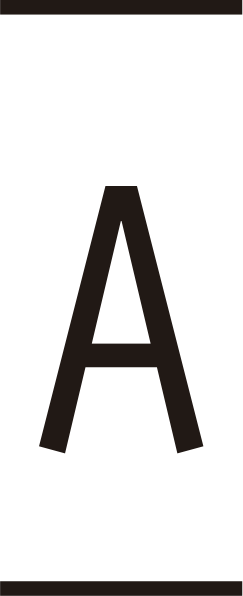
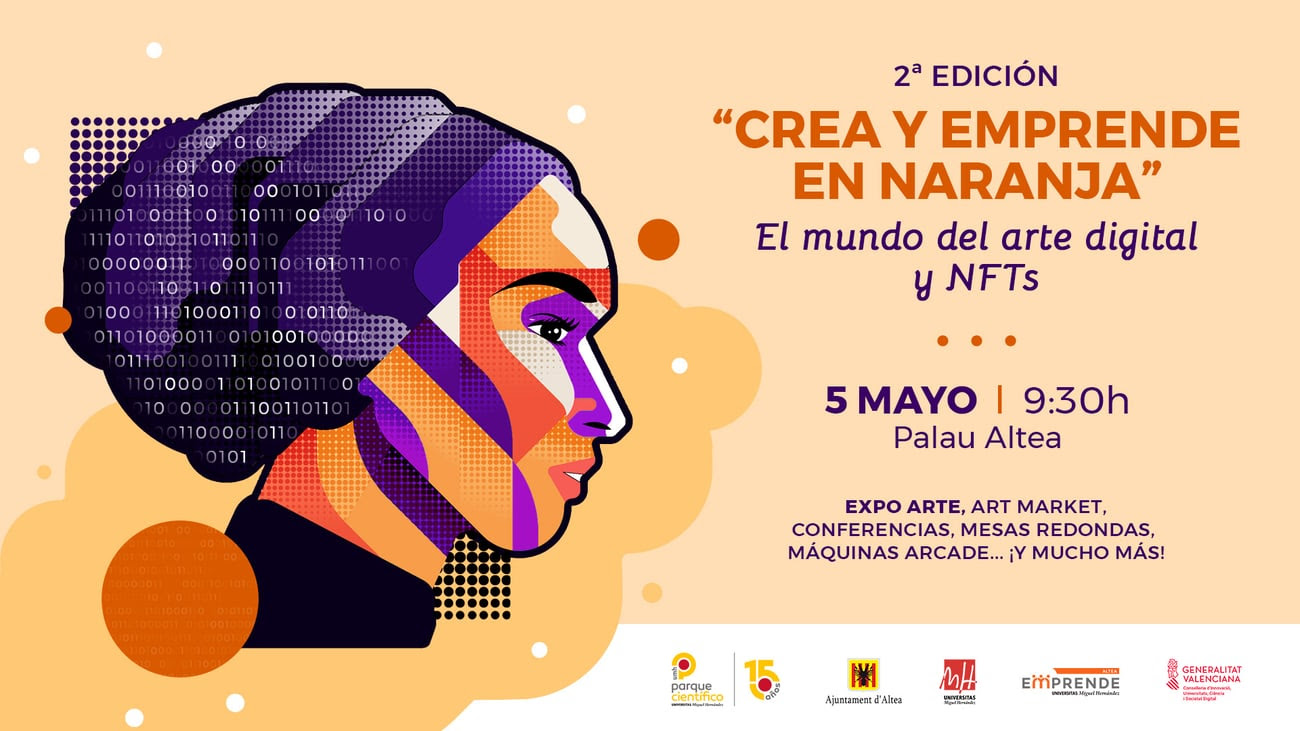
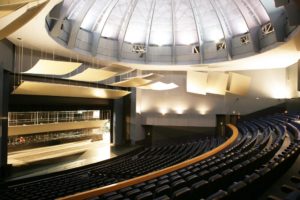
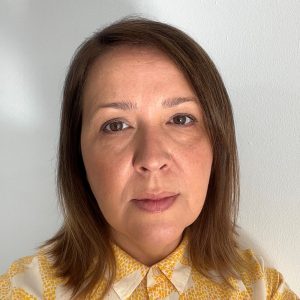

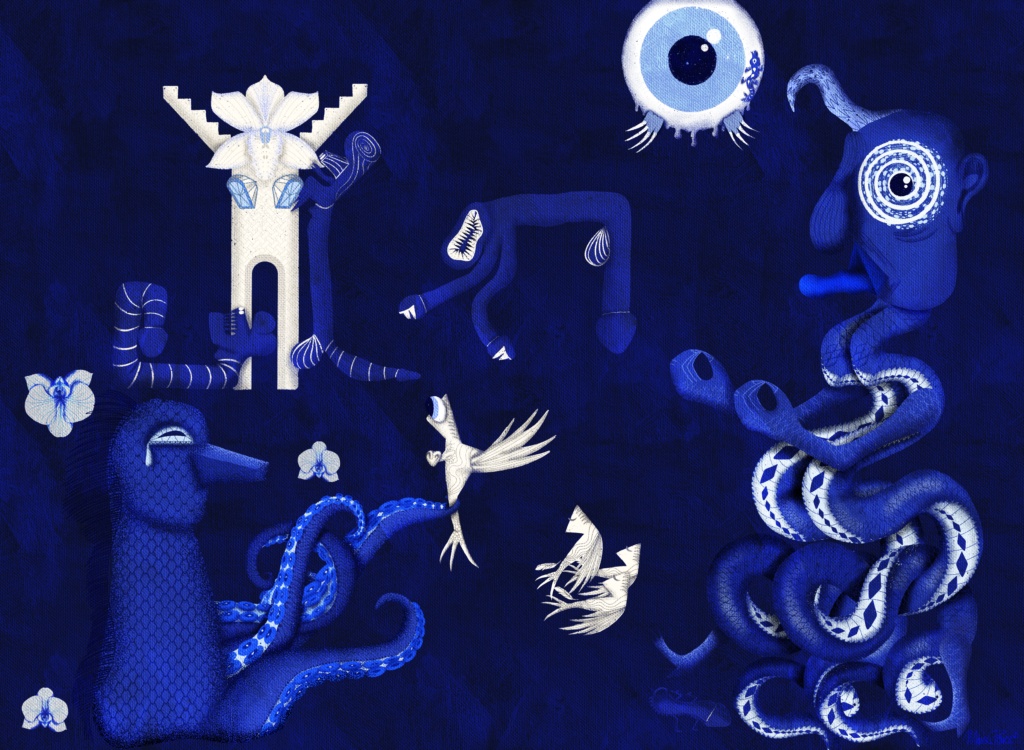
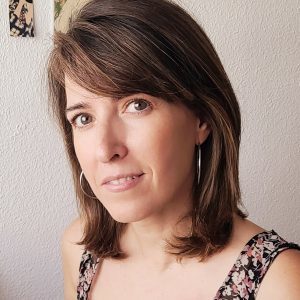
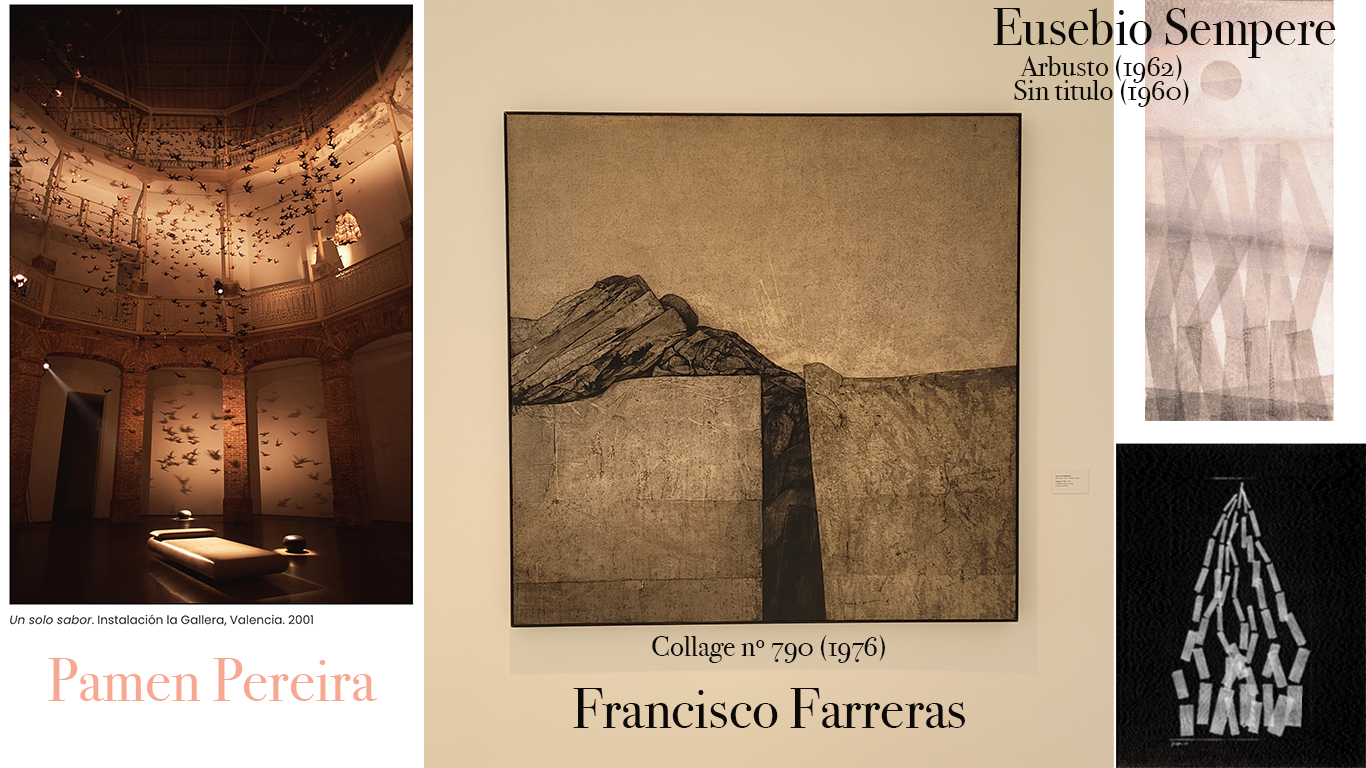
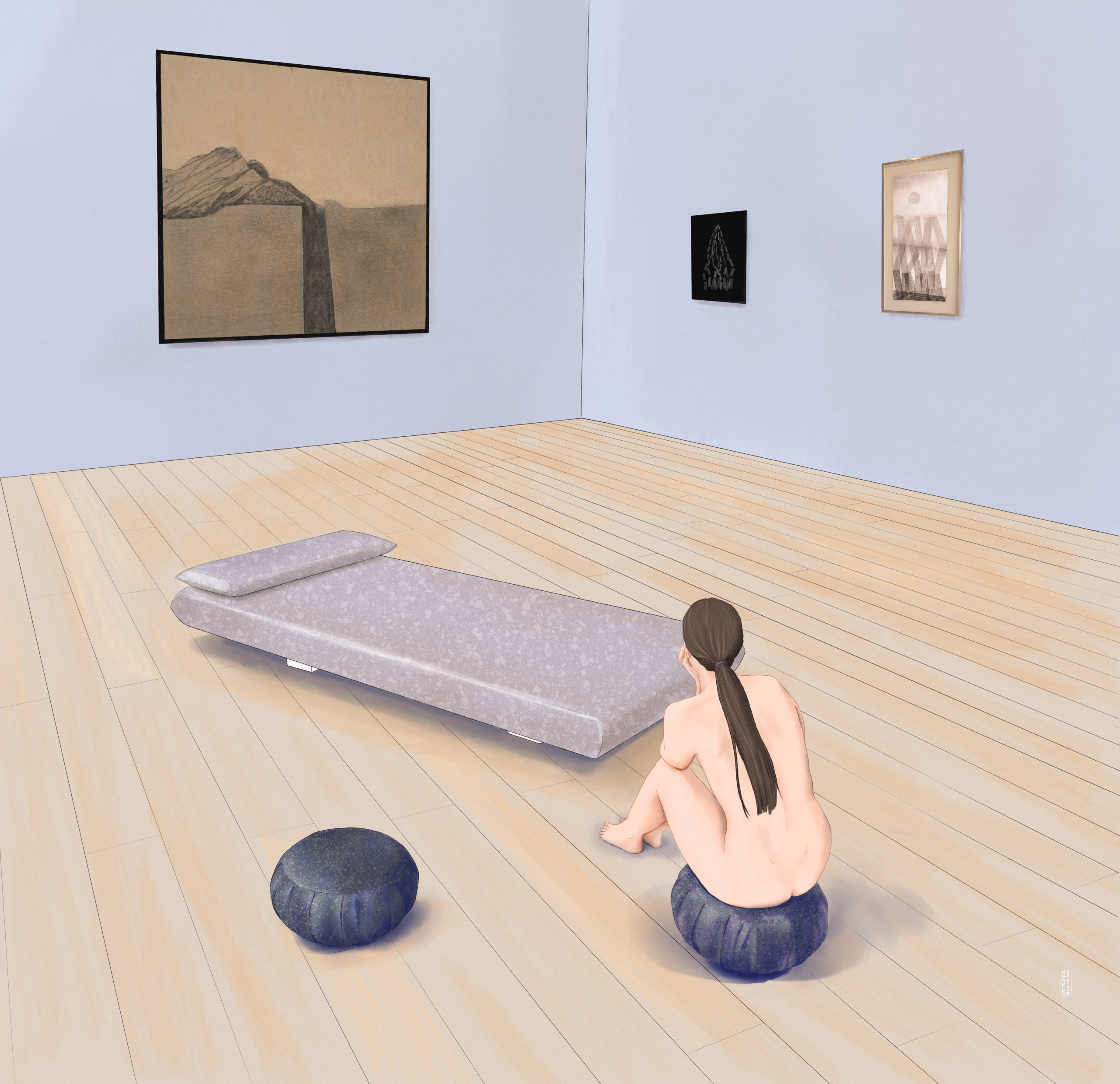
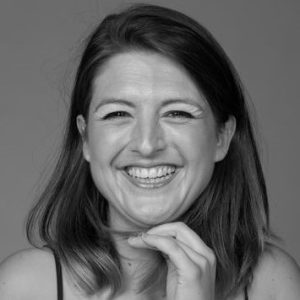
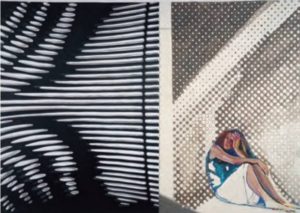

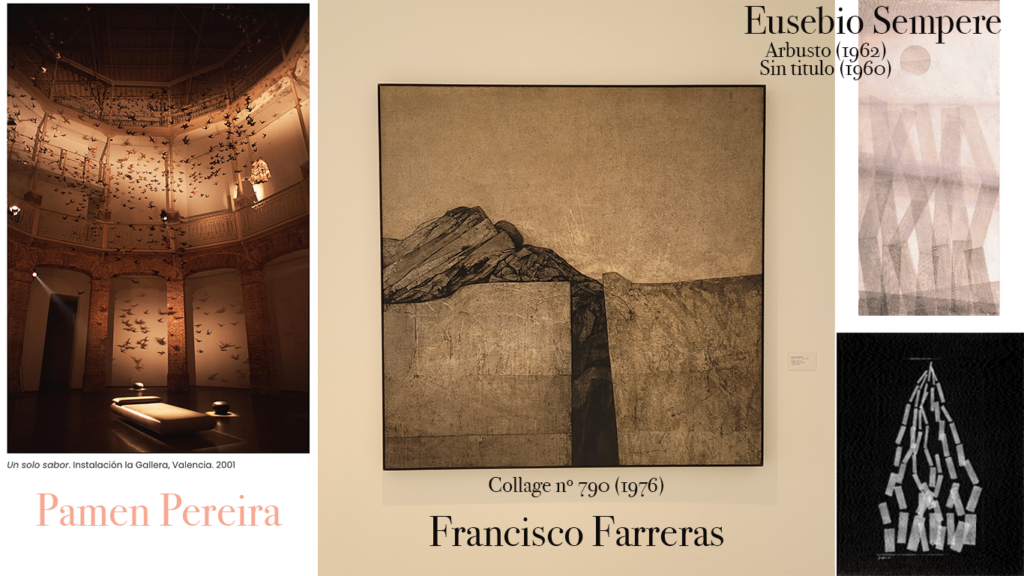
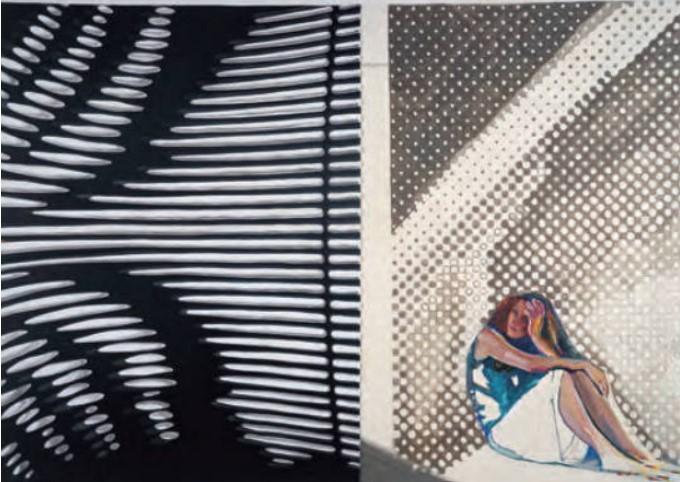
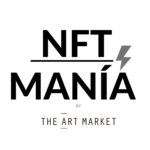
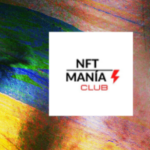
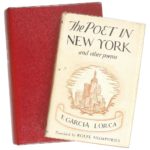
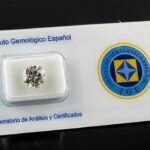
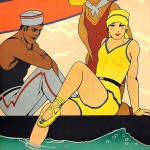
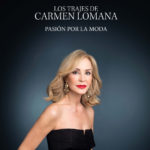
No Comments